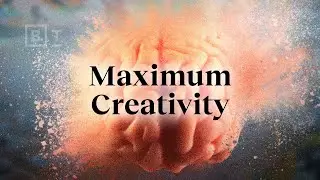Big Think Interview with Arne Glimcher | Big Think
Big Think Interview with Arne Glimcher
New videos DAILY: https://bigth.ink/youtube
Join Big Think Edge for exclusive videos: https://bigth.ink/Edge
----------------------------------------------------------------------------------
A conversation with the chairman of Pace Wildenstein Galleries.
----------------------------------------------------------------------------------
Arne Glimcher:
Arne Glimcher is the founder and chairman of the PaceWildenstein art gallery. He is also a published author, a film producer and a director, whose pictures include The Mambo Kings, Gorillas in the Mist, and Picasso & Braque Go to the Movies.
----------------------------------------------------------------------------------
TRANSCRIPT:
Question: Why did you decide to open a gallery?
Arne Glimcher: My dad died sort of unexpectedly, and I was a kid and still in school. And one Saturday afternoon, for solace, my brother and my mother and I were walking down Newbury Street in Boston looking at art galleries, and the best gallery was a gallery called the Swetzoff Gallery. And we saw that show, and we came down the stairs -- it was a series of brownstones on Newbury Street, so there was a kind of street level and an upper level -- and there was an empty shop. And I just casually turned to my brother and said, great place for a gallery, next to the best gallery in town. He said, open a gallery. I said, don't be ridiculous. By then I had decided what my objective was to be the director of the Museum of Modern Art. I thought that was a pretty good job. He said, well, you know, there isn't as much money as you thought there was, and Mother is young, and my father died quite young. And he said, you have to go to work. You have to do something. And I had been lucky; I hadn't had to go to work except for summer jobs. And so I was actually married a month at that moment, and he lent me $2400, and we opened the gallery. And I had no idea what I was doing. And I think that my entire career is based on luck.
Question: Describe the first day that the gallery was open.
Arne Glimcher: The first exhibition was mostly artists I knew who were teaching at universities in Boston, at Harvard, at Mass Art, where I had gone to school. And so we had an audience immediately, because these people had friends. So we opened the gallery. There was a huge opening, and my family and my wife's family, quite well situated in Boston, brought people in. We had a terrific opening. And sold nothing. But it's sort of what we expected. It took about a month before something sold. But you know, at the beginning of your life, really, and the beginning of your career, it creates a kind of blueprint. And I still think every time a work of art sells, it's a miracle.
Question: What was the first piece of art you sold?
Arne Glimcher: It was a sculpture by an artist named Mirko. And he was teaching at the Carpenter Center at Harvard; he was the head of the Carpenter Center at Harvard. And it was $1500, which was a huge amount of money in those days. And it was sold to a guy named Dick Solomon, who is my partner now in Pace Prints. And I had no idea who he was. And I was out of the gallery at a class, and my mother was babysitting the gallery for me, and he came in, and he loved the sculpture. And I came back; I said, where's the sculpture? And my mother said, well, you know, there was this guy who seemed so sincere, and I let him take it home to try it. And I said, who is he? She said, he's a butcher at Stop & Shop. Well, his family owned Shop & Stop, and he was training as a butcher. His mother had a great collection. But it was the beginning of a relationship that has lasted till now. I mean, he's my best friend and my partner in our print gallery. But it was pretty amusing.
Question: At what moment did you feel like you made it?
Arne Glimcher: In 1966, one of my heroes -- and still is -- is Jean Dubuffet. And as a kid I grew up knowing the work, idolizing the work, and I wanted to show him more than any other artist. And my gallery was new, and it had one major figure in it, Louise Nevelson, and a group of young artists, including Lucas Samaras, and Jim Dine, people like that. And I went to Paris, and I had a meeting with Dubuffet, and it was put together by a friend. And I had tried to see him once, and he wouldn't see me. And I had heard that he was not very happy in the gallery that he was in in New York, which was a very important gallery. It was the Seidenberg Gallery; they represented Picasso. And finally he met with me.
Read the full transcript at https://bigthink.com/videos/big-think...































